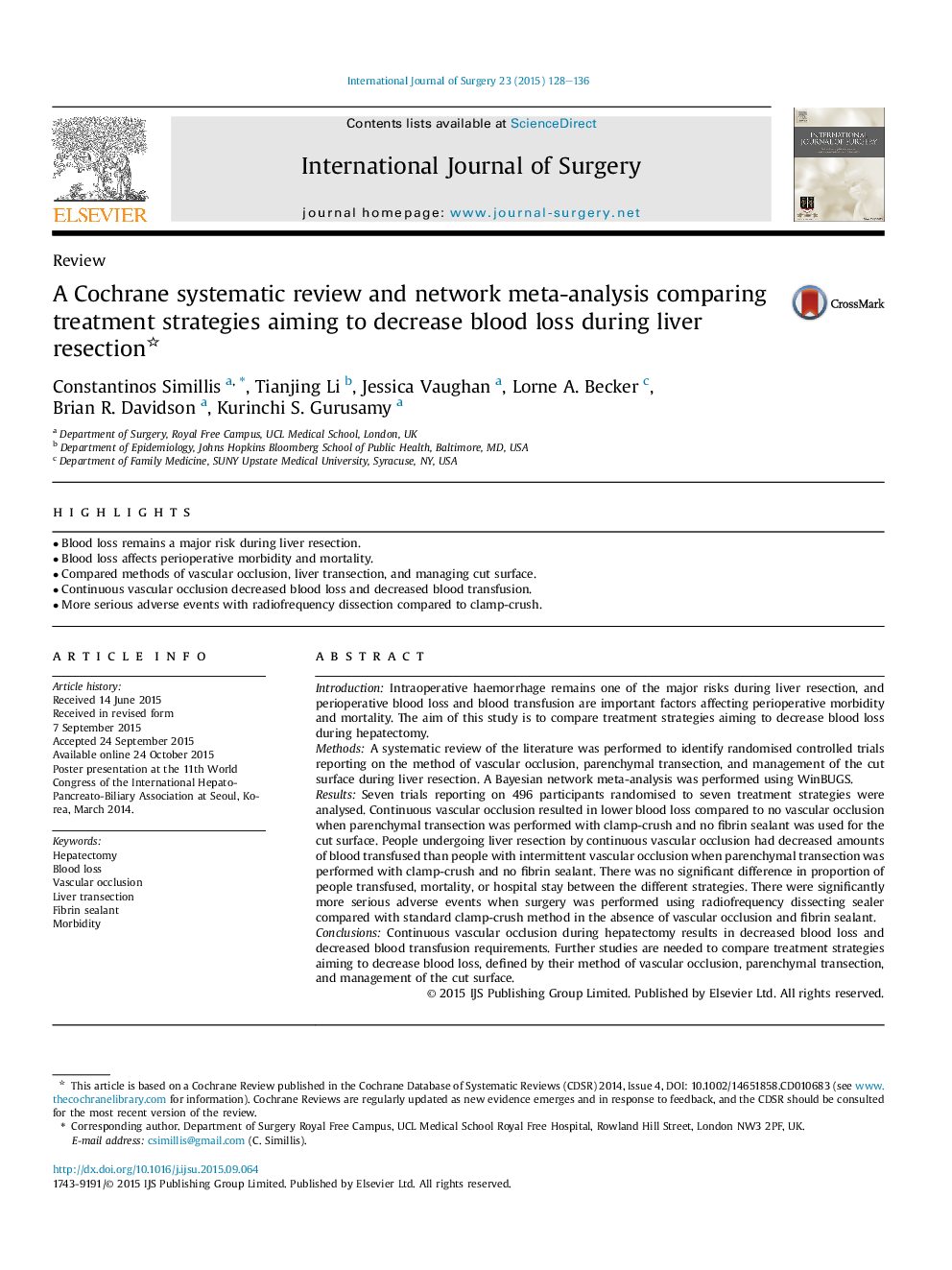| کد مقاله | کد نشریه | سال انتشار | مقاله انگلیسی | نسخه تمام متن |
|---|---|---|---|---|
| 6251230 | 1611968 | 2015 | 9 صفحه PDF | دانلود رایگان |

- Blood loss remains a major risk during liver resection.
- Blood loss affects perioperative morbidity and mortality.
- Compared methods of vascular occlusion, liver transection, and managing cut surface.
- Continuous vascular occlusion decreased blood loss and decreased blood transfusion.
- More serious adverse events with radiofrequency dissection compared to clamp-crush.
IntroductionIntraoperative haemorrhage remains one of the major risks during liver resection, and perioperative blood loss and blood transfusion are important factors affecting perioperative morbidity and mortality. The aim of this study is to compare treatment strategies aiming to decrease blood loss during hepatectomy.MethodsA systematic review of the literature was performed to identify randomised controlled trials reporting on the method of vascular occlusion, parenchymal transection, and management of the cut surface during liver resection. A Bayesian network meta-analysis was performed using WinBUGS.ResultsSeven trials reporting on 496 participants randomised to seven treatment strategies were analysed. Continuous vascular occlusion resulted in lower blood loss compared to no vascular occlusion when parenchymal transection was performed with clamp-crush and no fibrin sealant was used for the cut surface. People undergoing liver resection by continuous vascular occlusion had decreased amounts of blood transfused than people with intermittent vascular occlusion when parenchymal transection was performed with clamp-crush and no fibrin sealant. There was no significant difference in proportion of people transfused, mortality, or hospital stay between the different strategies. There were significantly more serious adverse events when surgery was performed using radiofrequency dissecting sealer compared with standard clamp-crush method in the absence of vascular occlusion and fibrin sealant.ConclusionsContinuous vascular occlusion during hepatectomy results in decreased blood loss and decreased blood transfusion requirements. Further studies are needed to compare treatment strategies aiming to decrease blood loss, defined by their method of vascular occlusion, parenchymal transection, and management of the cut surface.
Journal: International Journal of Surgery - Volume 23, Part A, November 2015, Pages 128-136